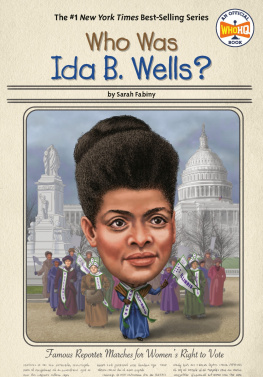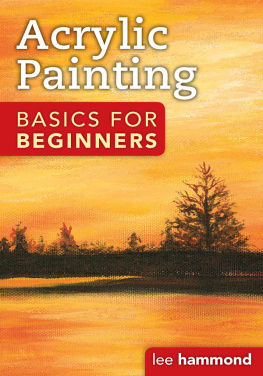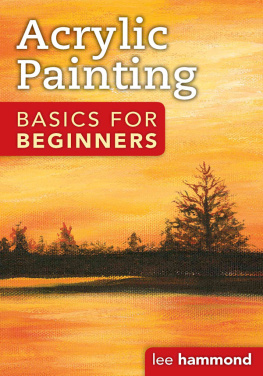S. Hammond - The Mignolaverse: Hellboy and the Comics Art of Mike Mignola
Here you can read online S. Hammond - The Mignolaverse: Hellboy and the Comics Art of Mike Mignola full text of the book (entire story) in english for free. Download pdf and epub, get meaning, cover and reviews about this ebook. year: 2019, publisher: Sequart Organization, genre: Detective and thriller. Description of the work, (preface) as well as reviews are available. Best literature library LitArk.com created for fans of good reading and offers a wide selection of genres:
Romance novel
Science fiction
Adventure
Detective
Science
History
Home and family
Prose
Art
Politics
Computer
Non-fiction
Religion
Business
Children
Humor
Choose a favorite category and find really read worthwhile books. Enjoy immersion in the world of imagination, feel the emotions of the characters or learn something new for yourself, make an fascinating discovery.
- Book:The Mignolaverse: Hellboy and the Comics Art of Mike Mignola
- Author:
- Publisher:Sequart Organization
- Genre:
- Year:2019
- Rating:5 / 5
- Favourites:Add to favourites
- Your mark:
- 100
- 1
- 2
- 3
- 4
- 5
The Mignolaverse: Hellboy and the Comics Art of Mike Mignola: summary, description and annotation
We offer to read an annotation, description, summary or preface (depends on what the author of the book "The Mignolaverse: Hellboy and the Comics Art of Mike Mignola" wrote himself). If you haven't found the necessary information about the book — write in the comments, we will try to find it.
S. Hammond: author's other books
Who wrote The Mignolaverse: Hellboy and the Comics Art of Mike Mignola? Find out the surname, the name of the author of the book and a list of all author's works by series.
The Mignolaverse: Hellboy and the Comics Art of Mike Mignola — read online for free the complete book (whole text) full work
Below is the text of the book, divided by pages. System saving the place of the last page read, allows you to conveniently read the book "The Mignolaverse: Hellboy and the Comics Art of Mike Mignola" online for free, without having to search again every time where you left off. Put a bookmark, and you can go to the page where you finished reading at any time.
Font size:
Interval:
Bookmark:
Hellboy and the Comics Art of Mike Mignola
EDITED BY
S.G. Hammond

Sequart Organization (Edwardsville, Illinois)
Copyright 2019 by the respective authors. Cover Mike Mignola 2019. Characters and works mentioned herein are trademarked by various owners.
Kindle edition, Mar 2019.
All rights reserved. Except for brief excerpts used for review or scholarly purposes, no part of this book may be reproduced in any manner whatsoever, including electronic, without express consent of the publisher.
Cover by Mike Mignola and is Mike Mignola 2019. Book design by Julian Darius. Hellboy and related characters are Mike Mignola. Interior art is by various respective rights holders.
Published by Sequart Organization. Edited by S.G. Hammond. Editing assistance by Parker Bray, Jon Cormier, Paul R. Jaissle, and Karra Shimabukuro.
For information about other titles in this series, visit sequart.org/books .
Contents
The Mignolaverse. A two-dimensional world of shadows, stark color contrasts, heavy-set lines dividing and blurring again the boundaries between monsters, men, and other (weird) things. Its a verse where comics become monsters themselves. But we like monsters; even as we fear them, we are drawn to them. The Mignolaverse is a book that takes seriously the drawing of monsters and it explores our connection to them through the lines artistic and narrative laid down by Mike Mignola. It is also a collaboration of fans and scholars, with an almost equal share of each contributing to the pages of this book.
In fact, one of the greatest things about studying comics is that it opens up a space of collaboration between fans, scholars, and creators in a way that no other field of study has. And it is a point of some significance to this book that, where Mike Mignola is concerned, fan writers have done much more work in furthering our understanding of his comics and those by his collaborators than academics have. The Mignolaverse embraces the history of fan criticism of Mignola, and places fan voices and those of scholars alike in spaces opened up by sustained critical inquiry. What results is a thrilling volume that ranges the gamut of Mignolas comics art and narratives.
I wont survey Mignolas career here youll get that in the essays that follow but I think a few words about Why Mignola? are in order. This project began for two reasons. First, Mignolas comics have long been one of my mainstays, attracted like many before me as I was to his blocky, heavy-lined style that makes of each figure simultaneously a caryatid and a dynamo. His figures are statuesque, burdened by the weight of his universes age and complexity, but also vibrantly alive with an energy that has rippled through the comics scene of the past two decades.
Second, on account of his themes and source material, and his unique blending of tradition with his own artistic lifeblood, Mignola is at the vanguard of the contemporary Gothic in comics. He is to the genre nexus of Gothic, weird, and horror in comics what Thomas Ligotti, Jeff VanderMeer, and China Miville are to that nexus in prose fiction today. Mignola is certainly unparalleled on his own, but his work is all the more significant for his having invited to it multiple writers and artists who have in their own way extended, morphed, tweaked, challenged, and heightened Mignolas comics or who have, with Mignolas blessing, struck out on their own with his characters (Kim Newman and Maura McHughs recent work on Sir Edward Grey, Witchfinder: The Mysteries of Unland is a clear example).
When this project was dreamed up and pitched to Sequart a thank you to Mike Phillips for making this book happen there was one special issue of a magazine about Mignolas comics and a book. That magazine was Comic Book Artist #23 (2002); it included an incredibly important interview with the elusive Mignola and is cited by a number of the contributors in this volume. The book was Stephen Weiner, Jason Hall, and Victoria Blakes Hellboy: The Companion (2008), which, while incredibly useful for its detailed history of Hellboys universe and for providing insight into the literature that inspired Mignola, was limited critically. Of course, fan publications have written on Mignola for as long as he has drawn and written comics, and the online comics news sites are no different. Multiversity Comics s Mignolaversity feature, for example, is an unparalleled source of information about upcoming Mignola and co. publications and also an archive of more critical writing (one of their regular writers, Mark Tweedale, is featured in this volume).
While these were the major publications about Mignola and his comics art when this book was pitched, a new book by film and comics scholar Scott Bukatman has since appeared on the scene. Bukatmans Hellboys World: Comics and Monsters on the Margin (2016) is and Im gushing here when I say it, but here it goes: like everything Bukatman writes a phenomenal contribution to scholarship. It is a study of Mignolas comics as much as it is a study of how (and why) we read comics. A small host of other scholars have written their share on Mignola and / or Hellboy, for example, Laura OConnors The Corpse on Hellboys Back: Translating a Graphic Image, which traces a visual reference from Guillermo Del Toros film Hellboy (2004) into Mignolas comics and from there to an Irish short story and even to its folkloric roots. But not much else of note has appeared on Mignola in academic circles. The contributors to this volume hold a torch to that scholarly darkness, giving light to a few more of the shadows that compose the Mignolaverse.
A brief overview, then, of what this book offers. The volume kicks off with Mark Tweedales compelling narrative of how Mike Mignola built his Hellboy comics universe over the past 22 years, with some thoughts about whats to come. Tweedales chapter is immediately followed by a complimentary discussion by Scott Cederlund on Mignolas artistic collaborations. Cederlunds chapter highlights how and why each major collaborator benefited Mignolas narrative vision. Following this are four chapters that detail various aspects of Mignolas influences. Anders Lundgren gives us a glimpse of weird literary influences, as well as Mignolas love of luchadores, vampires, and puppets in film and literature alike. Tom Shapira picks up on Mignolas sly use of numerous sources for his vampiric monsters and provides detailed background. Rafa Ponik then shows Mignolas sources from Celtic mythology to give us a deeper intertextual appreciation of several key Hellboy stories. Lundgren returns again, this time with a chapter on how pulp adventure heroes and the pulp aesthetic gave life to Mignolas breakout character Lobster Johnson and continue to imbue his stories with pulpy madness.
Following that comes an essay by Sharon Packer, M.D., which discusses the thematics of psychiatric asylums, German expressionism, and madness in the art and stories Mignola has produced since the beginning of his career in work-for-hire comics (notably in 1985s Rocket Raccoon ) up to the present. Shapira then returns with a taxonomy of three types of horror stories, which he expertly applies to the Mignolaverse, ending the chapter with an appropriate twist: there is a fourth type of horror story our own. Max Nestorowich continues our descent into darkness and madness as he explores Mignolas visions of Batman, analyzing murderous Victoriana in Batman: Gotham by Gaslight and uncovering Lovecraftian weirdness in Batman: The Doom that Came to Gotham . Stefan Hall then brings us into the digital age with a study of Hellboys life in video games; he provides both a history of Hellboy video games and, importantly, their general market failure as well as some consideration of issues adapting comics properties to the video game medium. Christina M. Knopf returns us to a grim but important topic in her chapter on the (super)nature of war in Mignolas comics, showing how Mignola has used his characters to critique and reflect back our worries about war, mass violence, and their aftershocks in the 20 th and 21 st centuries. And Nicolas Labarre brings the books chapters to a close with his magnificent study of an artistic and narrative motif used time and again throughout Mignolas career: the fall.
Font size:
Interval:
Bookmark:
Similar books «The Mignolaverse: Hellboy and the Comics Art of Mike Mignola»
Look at similar books to The Mignolaverse: Hellboy and the Comics Art of Mike Mignola. We have selected literature similar in name and meaning in the hope of providing readers with more options to find new, interesting, not yet read works.
Discussion, reviews of the book The Mignolaverse: Hellboy and the Comics Art of Mike Mignola and just readers' own opinions. Leave your comments, write what you think about the work, its meaning or the main characters. Specify what exactly you liked and what you didn't like, and why you think so.










